1lumen selects and reviews products personally. We may earn affiliate commissions through our links, which help support our testing.
NEXTORCH T10L review
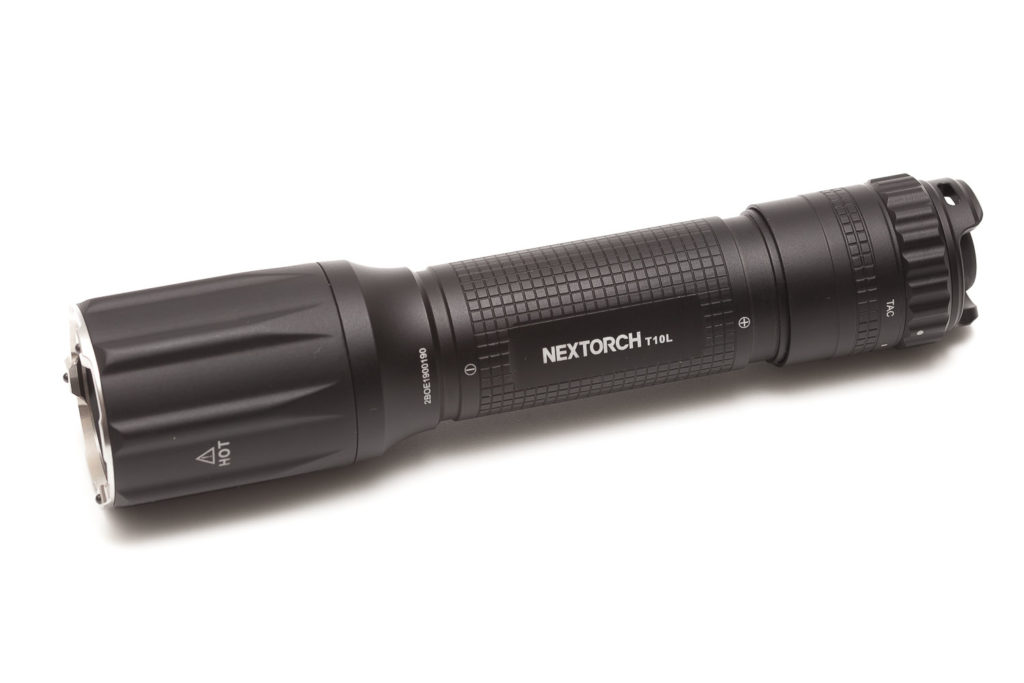
Specifications
| Brand / Model | NEXTORCH T10L |
|---|---|
| LEP | Class 3B LEP |
| Lumens | 500 lumens |
| Beam distance | 1100 meters |
| Battery config. | 1*21700 |
| Material | Aluminum |
| Modes | 3+ |
| Blinkies | Strobe |
| Reflector | N/A |
| Waterproof | IPX7 |
| Review date | October 2020 |
NEXTORCH T10L INTRODUCTION:
After reviewing several NEXTORCH flashlights I have come to appreciate their quality and approach to the world of flashlights. After reviewing their other LEP flashlight, the NEXTORCH T7L, I have the opportunity to test the T10L, its bigger brother. According to its specs it is supposed to throw the same distance but for a longer time. After discussing the T10L on Reddit, I can actually say the T10L is definitely a different flashlight. The design is different, the way to charge, the size, the battery it takes, and basically a totally different flashlight. So don’t think the only difference is the battery size, but everything is different.
It is possible that they listened to their user base. In my last review I said that a proprietary charge system can be nice and useful, but a common USB charge feature might be better for usability. And they changed it!
Package quality.
The package in which the T10L got shipped isn’t very attractive in terms of quality or design. It’s a straightforward box with accessories. They did however send the NEXTORCH FR-2 tactical grip, that is used instead of a normal pocket clip.
- The NEXTORCH T10L
- Lanyard
- USB-C charging cable
- O-rings
- Manual in multiple languages (EN, FR, DE, ES, CN)
I also received the FR-2 tactical grip ring and the V5 holster. Both of them are optional accessories. The V5 holster is actually a plastic holster than can be rotated so it points into the direction you’d like. Up, down, forward, backward etc.
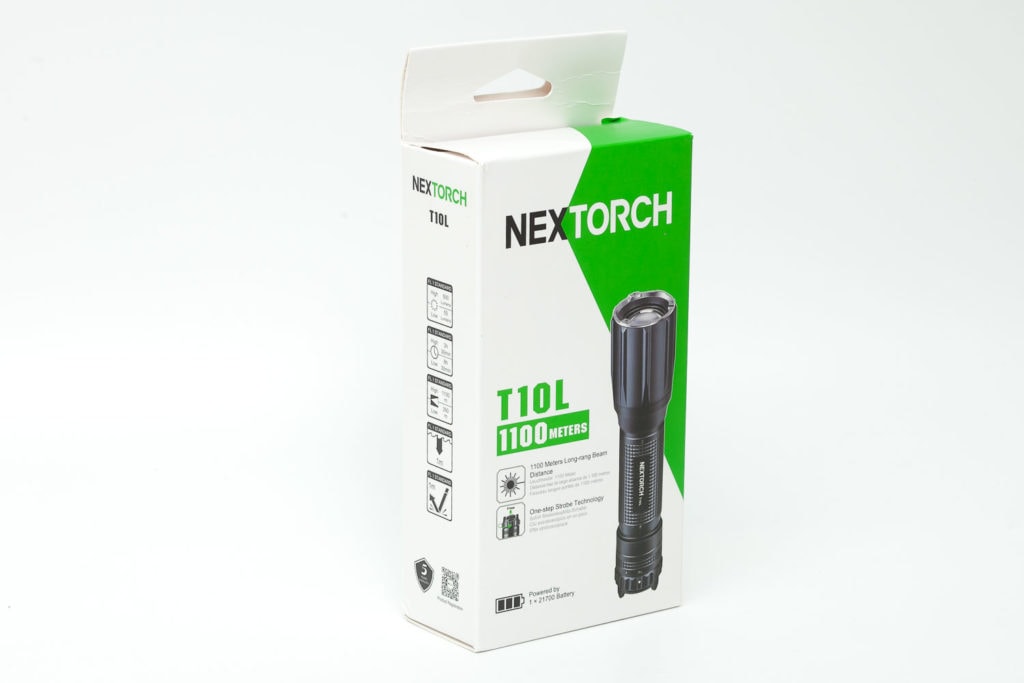
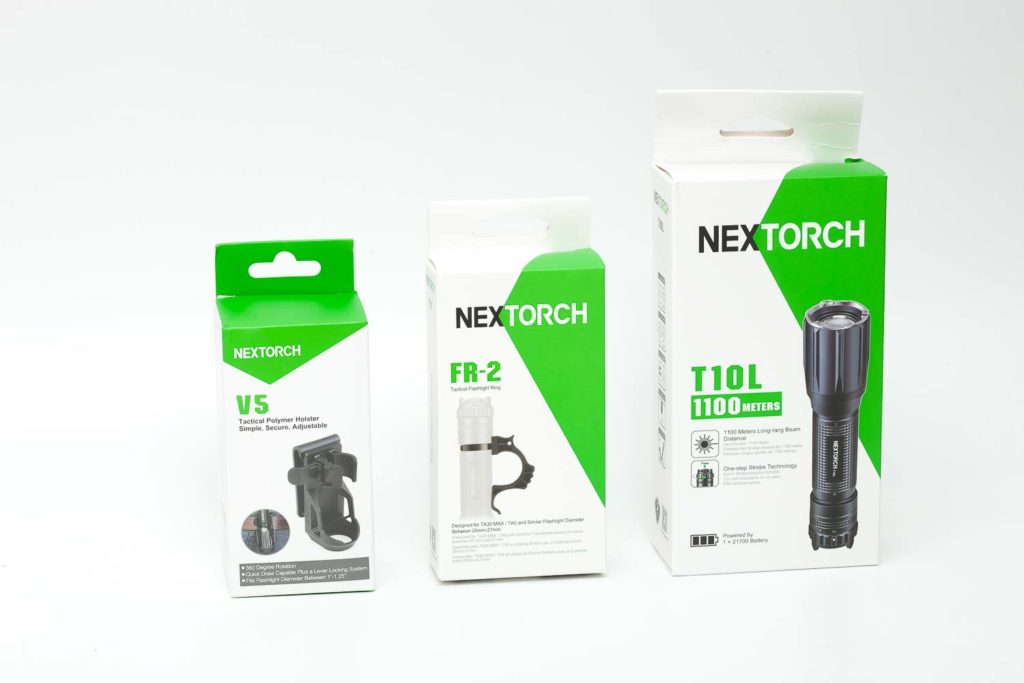
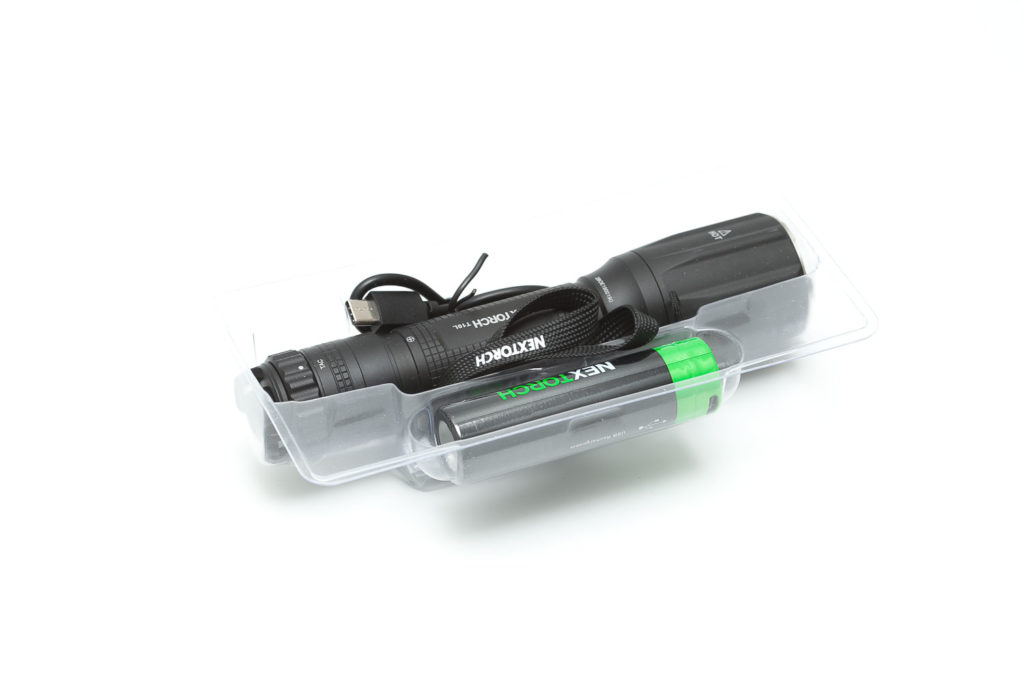
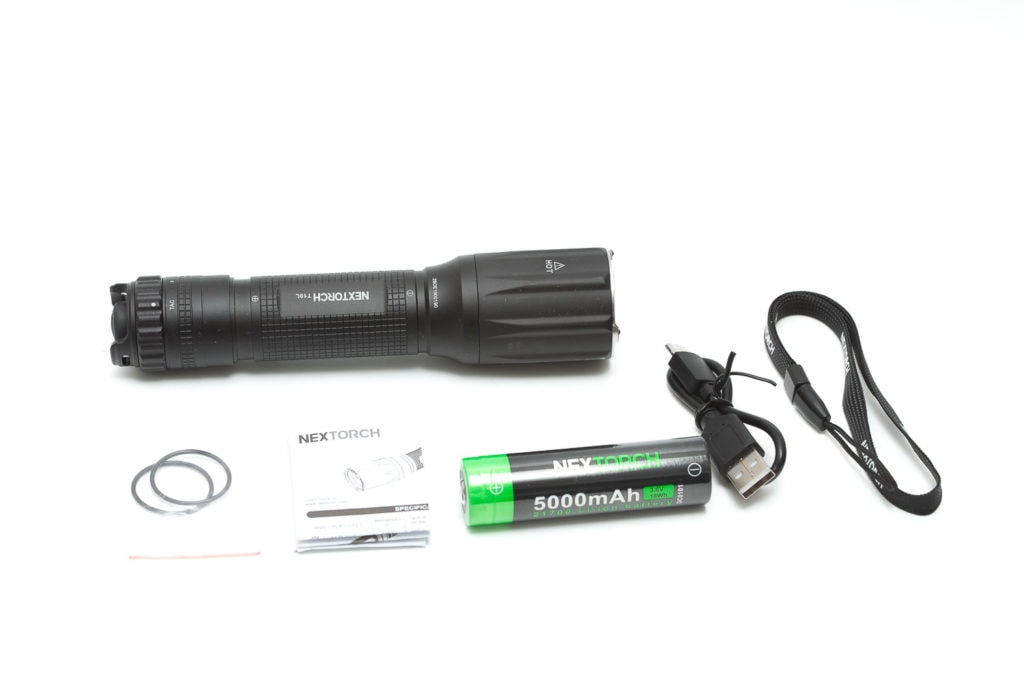
Handling of the light
The T10L is a bit larger than the T7L. (We will see if that actually helps with its long-range reach). The size is larger, but still comparable to the size of other tactical 21700 flashlights. It can be used with a one handed operation, when holding the torch in a tactical-grip style, pointing the hand upward. Holding the hand in a normal position, pointing it down, you need to change your position in order to turn the light off or change modes.
There is something special to be said about the T10L and just this feature makes it a totally different beast from its smaller sibling, the T7L. It has a magnetic control ring for the modes, and you use the tail switch to activate and deactivate that mode. This is a totally different user interface.
The V5 holster is a great addition in case you prefer to not pocket-carry it. The package also includes a lanyard in case you don’t like to pocket carry it or use a holster.
My shipment also included the NEXTORCH FR-2 tactical flashlight ring, that can be used in combination with the T10L. It’s made of hard plastic and seems to be very sturdy. At first I was wondering why there was no pocket clip in the box, until I realized the FR-2 ring is used instead.
The knurling is very smooth, so it could feel a little bit slippery when using.
Tailstanding: Yes, it does, but pretty unstable.

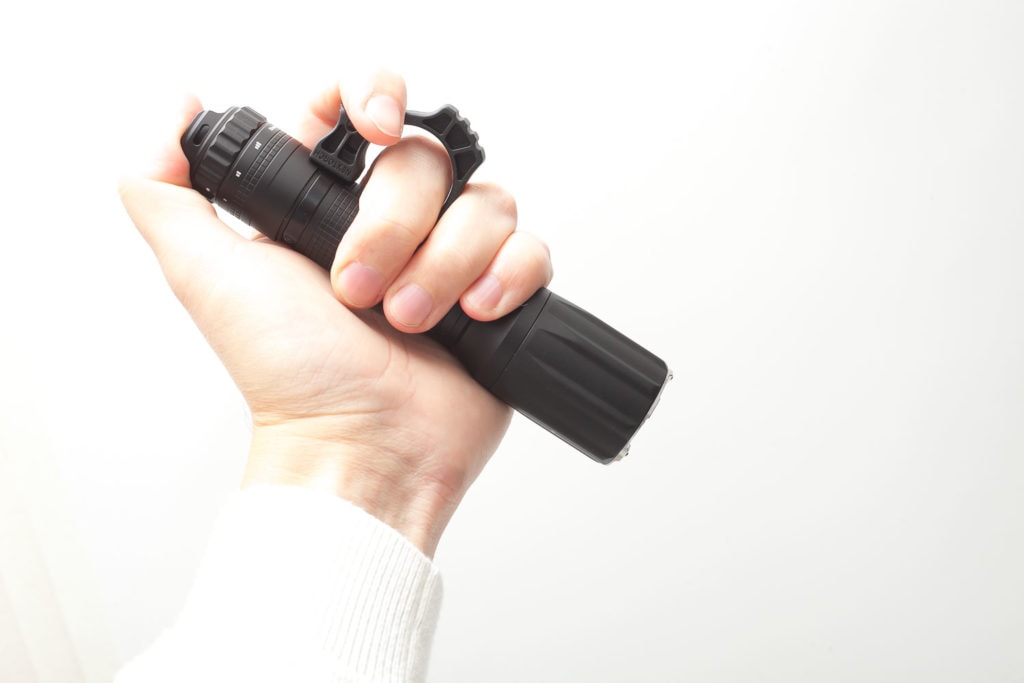
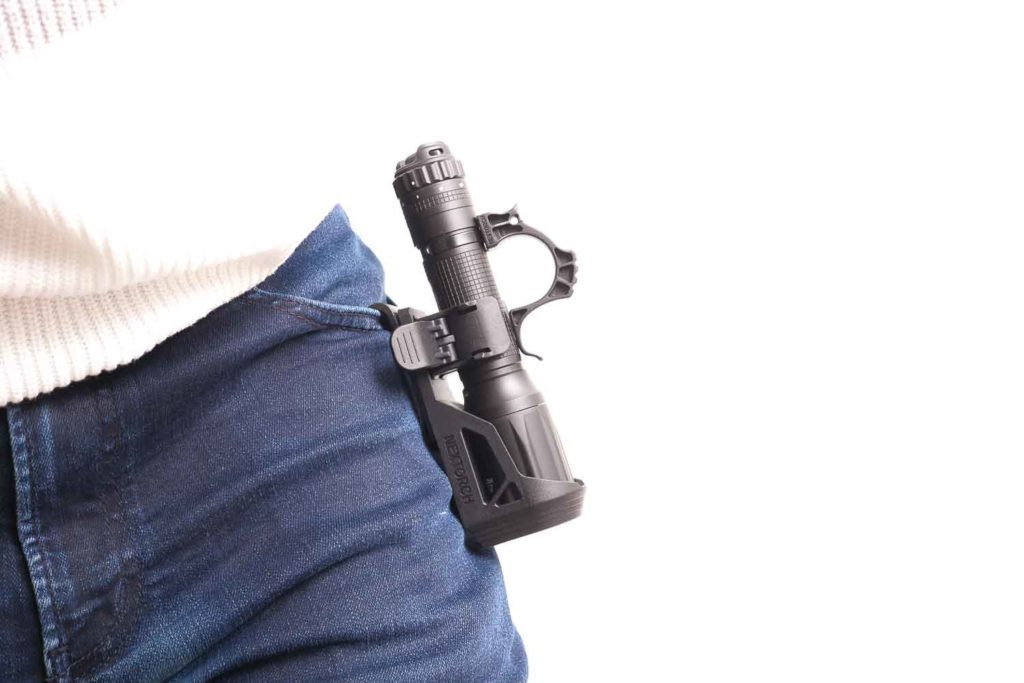
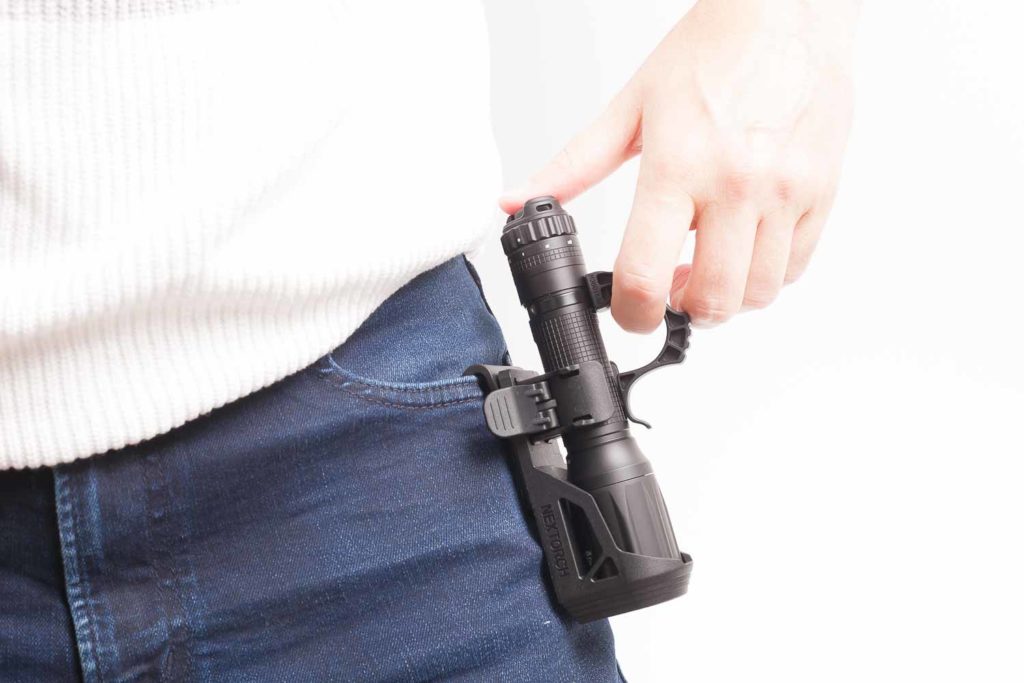
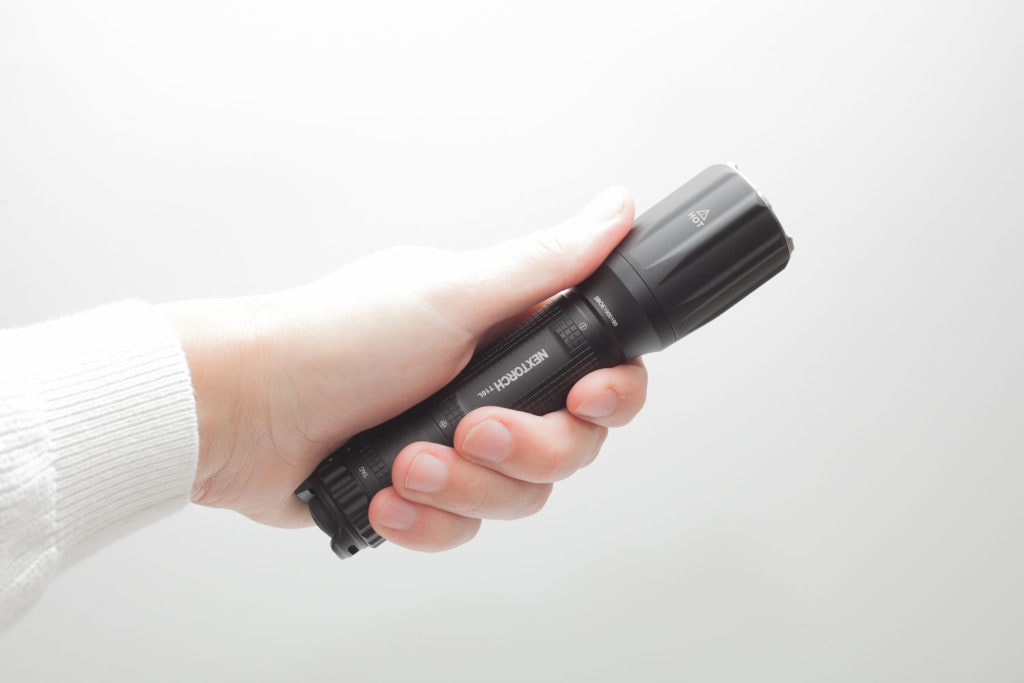
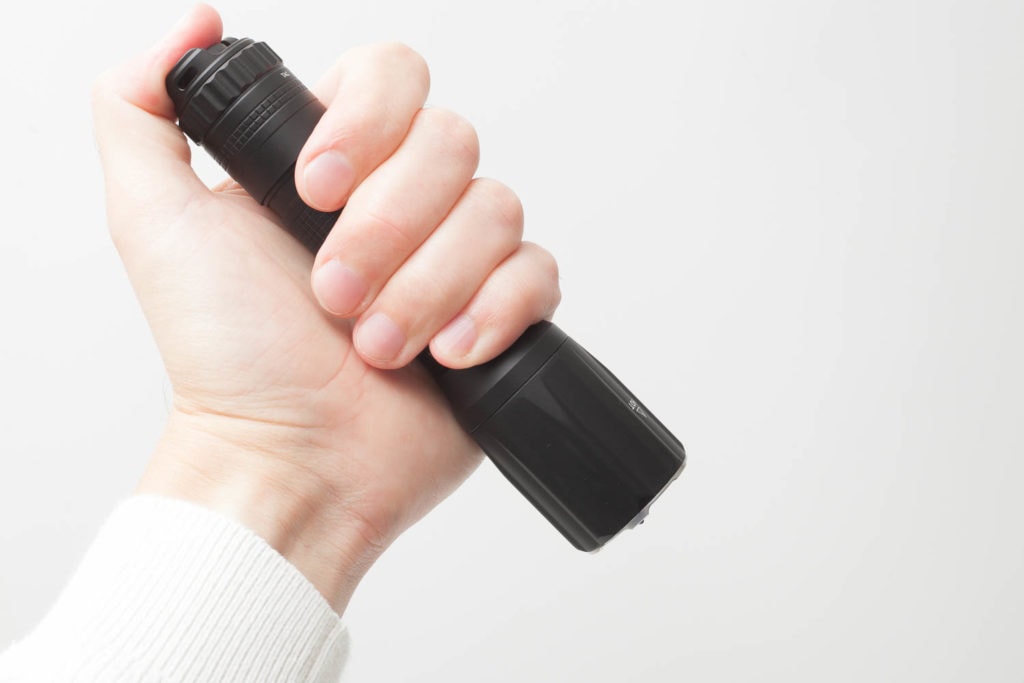
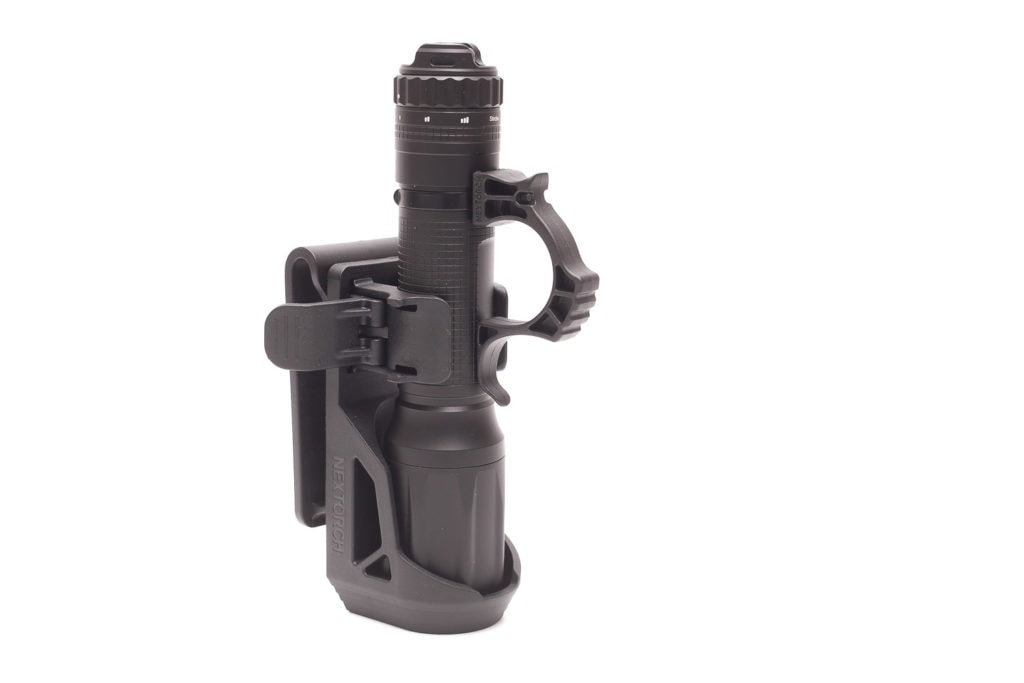
Build Quality, Knurling, Threads, and anodization
The first NEXTORCH I owned was the T7L, and I really liked the build quality on that one. After the T7L I also reviewed the P80, which also was built well. The T10L is again a wonderfully made and machined flashlight. We are not talking about a $30 flashlight you get off eBay. We are talking about a high-quality, military grade flashlight with a company behind it, that has been around for more than a decade.
Last week, when I was walking to a local hardware store, I even found a NEXTORCH flashlight, which suprised me quite a bit. But that means, that they are available worldwide.
The tailcap can be unscrewed and the body has 2 parts. It has an inner tube for 1 feature and the outer, battery tube for another. I think the inner tube is used for modes, while the outer tube is used for the battery. Fortunately, the inner tube doesn’t sit loose, so you can’t take it out unless you really try your best. Some flashlights, like the first edition Lumintop FW3A had an innter tube that sat loose, and could get lost.
Anodization across the light is done wonderfully. Ther is really nothing to complain about the machining, knurling anodization or anything. Well done NEXTORCH .
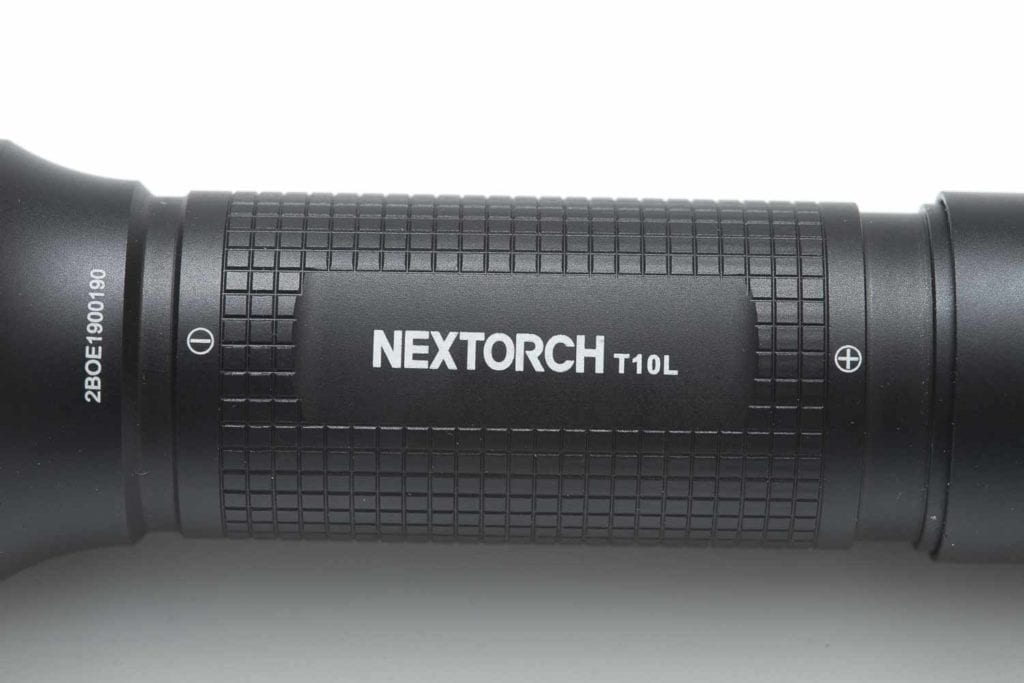
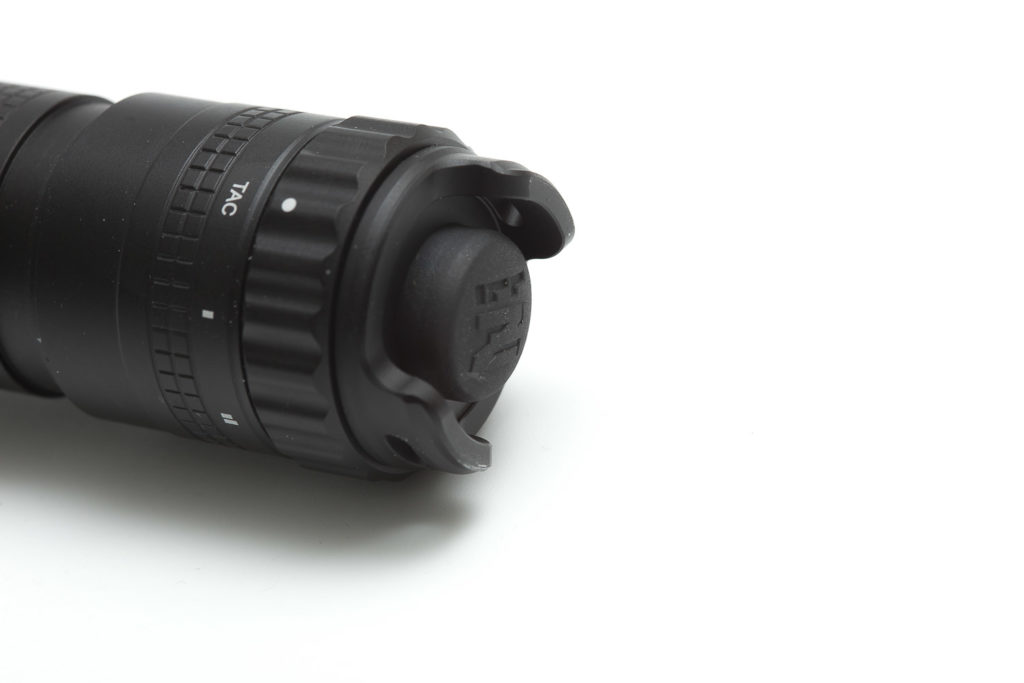
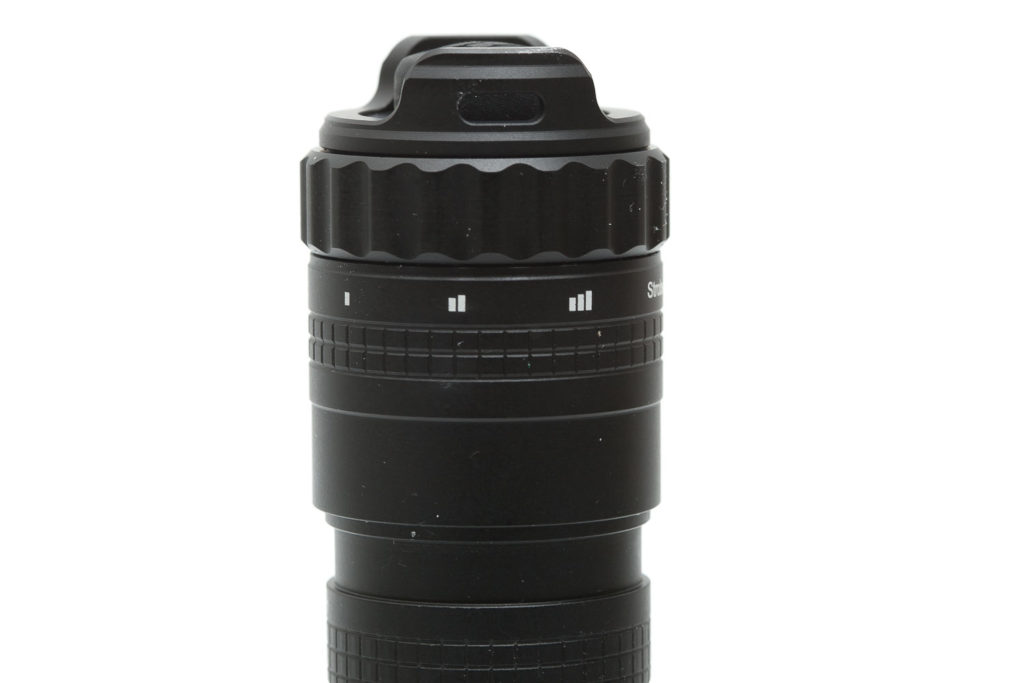
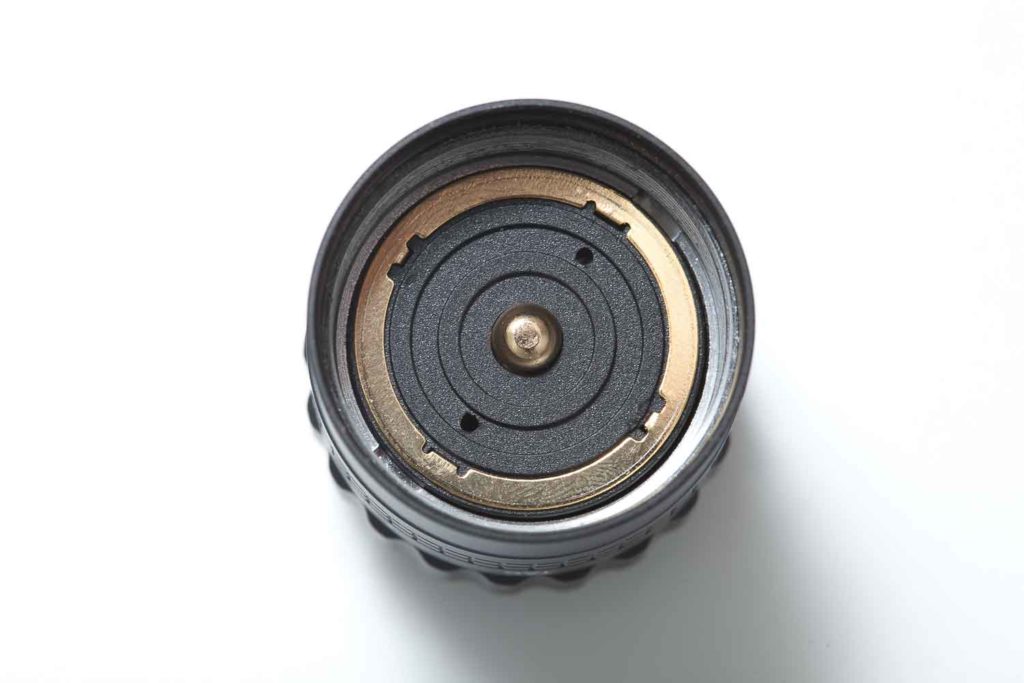
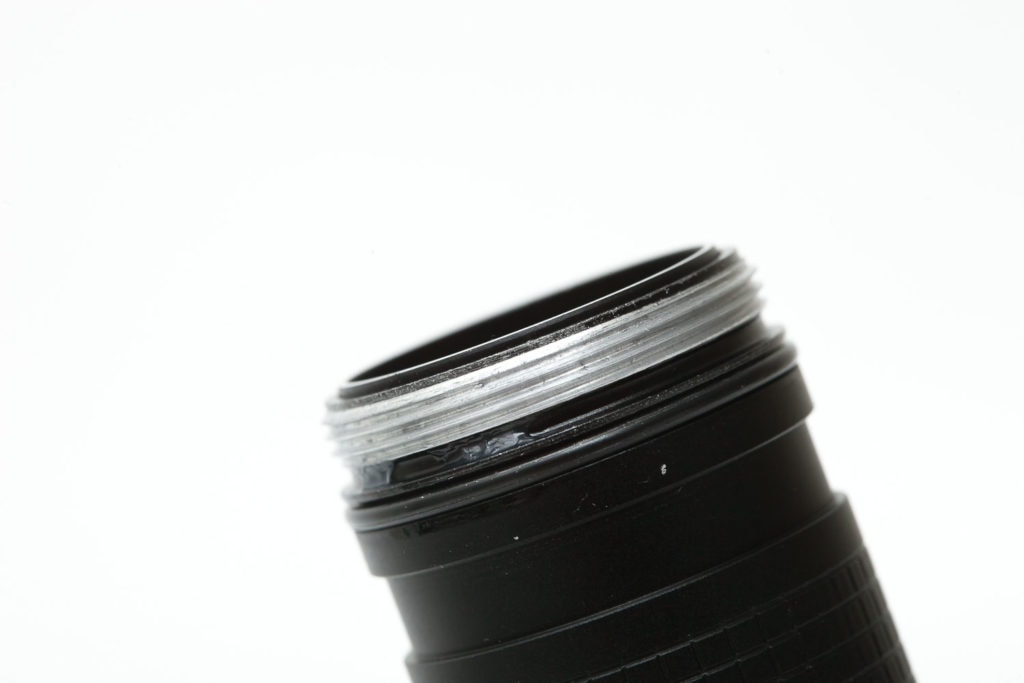
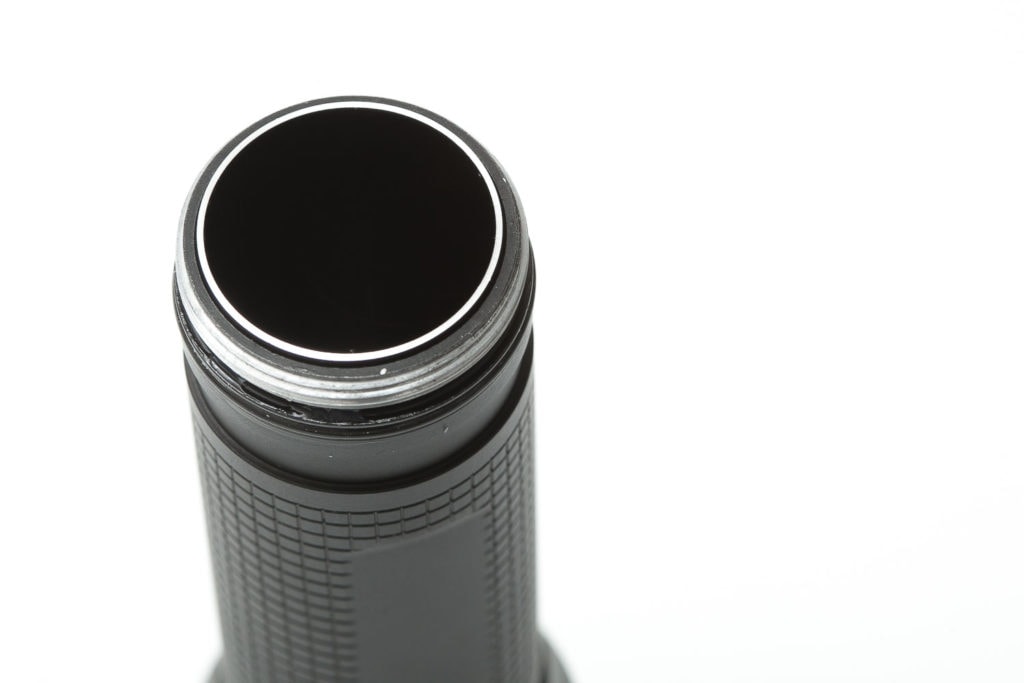
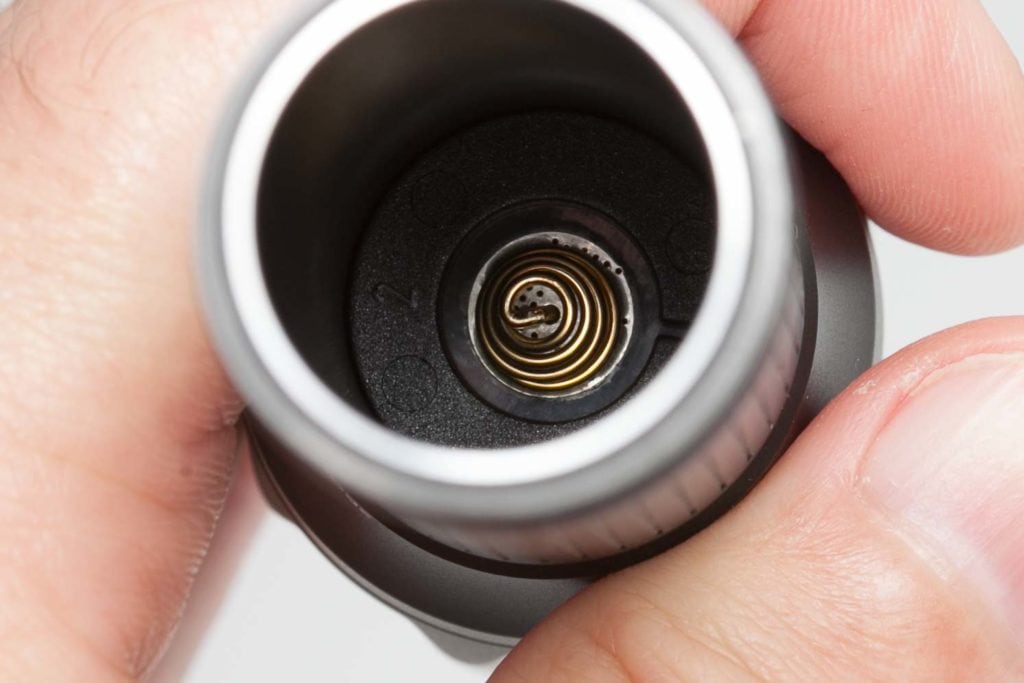
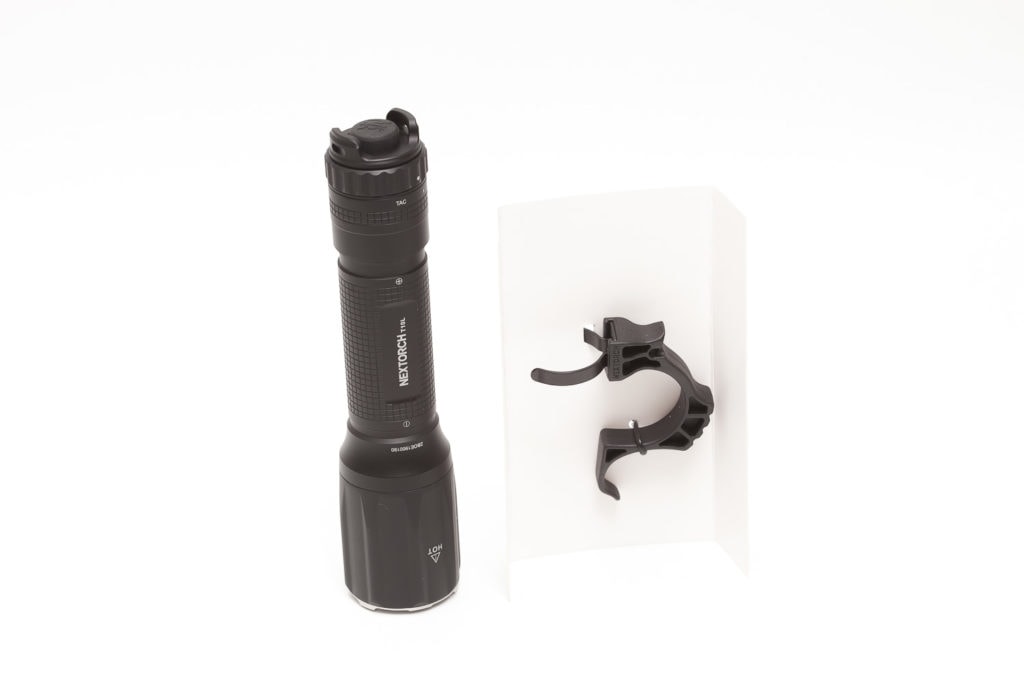
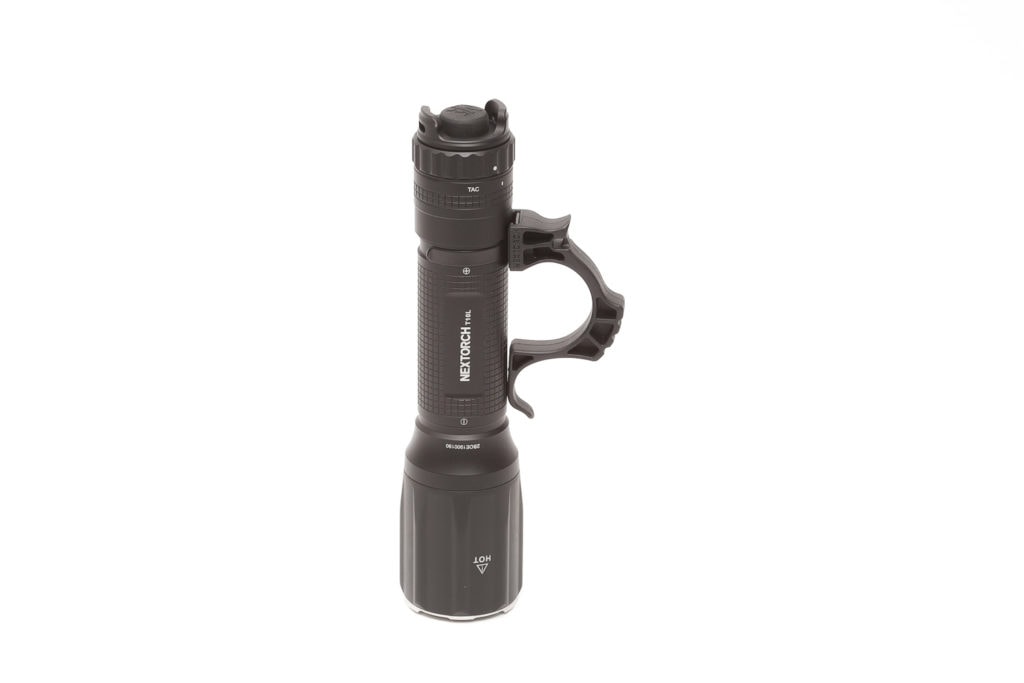
LEP, LENS, BEZEL, AND REFLECTOR
Well, we can’t really talk much about the LED, because the T10L doesn’t have an LED, but it has an LEP system. LEP stands for Laser Excited Phosphor. Which basically shines a blue laser onto phosphor that turns the color of the beam into a white-ish beam. In many LEP flashlights, the beam feels a bit more yellow. The laser itself is rated as a Class 3B laser. Make sure you are allowed to use this type of flashlight in your country.
LEP flashlights are high powered, high intensity flashlights. Therefore, they need extra attention, and shouldn’t be used by minors. Never point a white laser flashlight (another word for LEP flashlights) into somebody’s eyes. You can blind them.
Dropping the T10L shouldn’t be problematic as long as it drop on the stainless steel bezel. Stainless steel is much stronger than aluminum, so much more impact resistant. On top of the bezel are 3 nano ceramic balls, which are strong enough to break glass. The front glass of the T10L is actually a convex shaped lens. This is not with all flashlights. Having a flat glass in front of the convex glass could help. A flat glass lens is much easier to replace and probably also much cheaper.
The beam itself looks more yellow than white. This is very common with LEP flashlights. All of them have a shift in color throughout the beam.
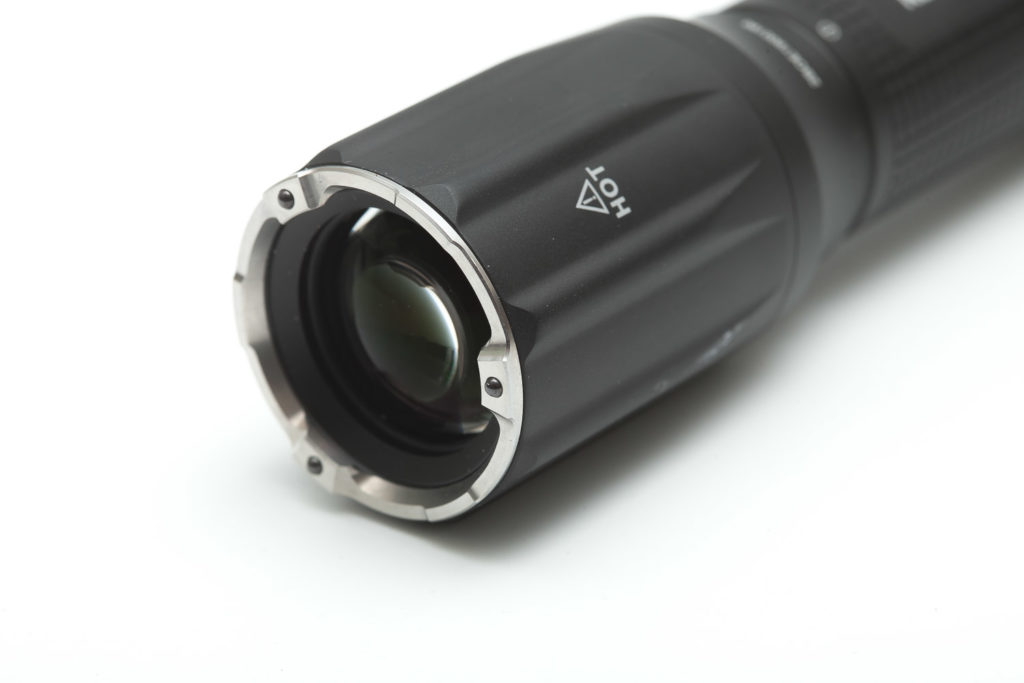
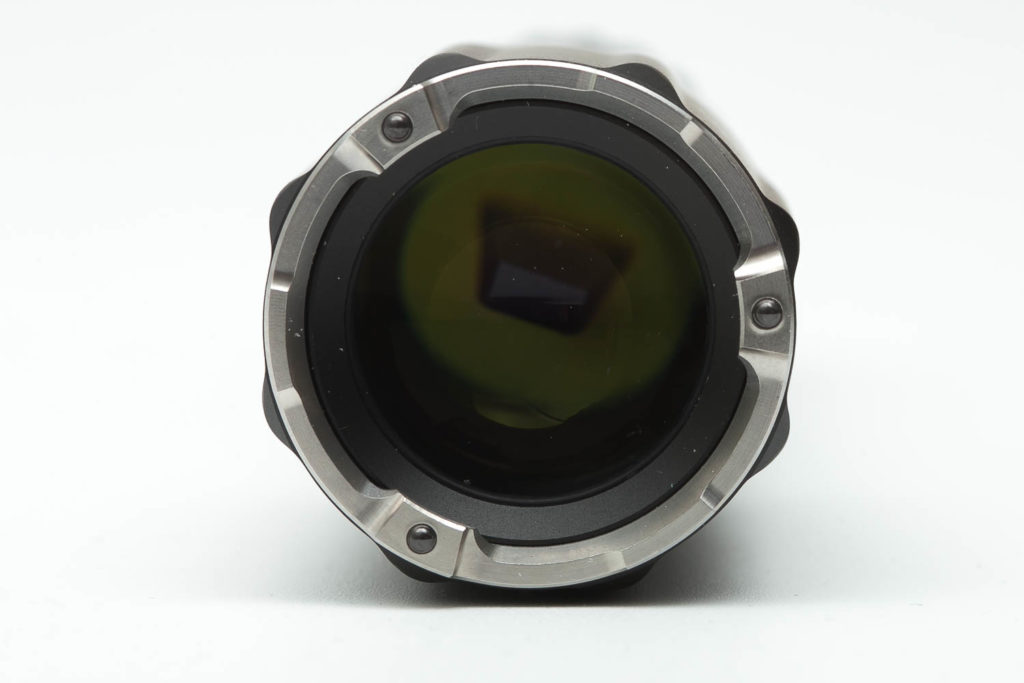
Dimensions
- Length: 162 mm ( 6.378 ”)
- Head diameter widest: 38.56 mm ( 1.518 ”)
- Body diameter widest: 27.60 mm ( 1.085 ”)
- tailcap: 29.41 mm (1.157″)
Weight:
- Empty: 193 g ( 6.81 oz)
- With battery: 266.8 g ( 9.40oz)
- Battery: 73.8 g (2.60 oz)
White Laser Flashlights
Here is a size comparison with the other LEP flashlights.
From left to right: Acebeam W10 gen2, NEXTORCH T7L, Jetbeam M2S wp-rx, Fenix TK30, Weltool W3 PRO, NEXTORCH T10L, Unbranded 26650 LEP, Jetbeam M1X wp-rx, Weltool W4, Acebeam W30
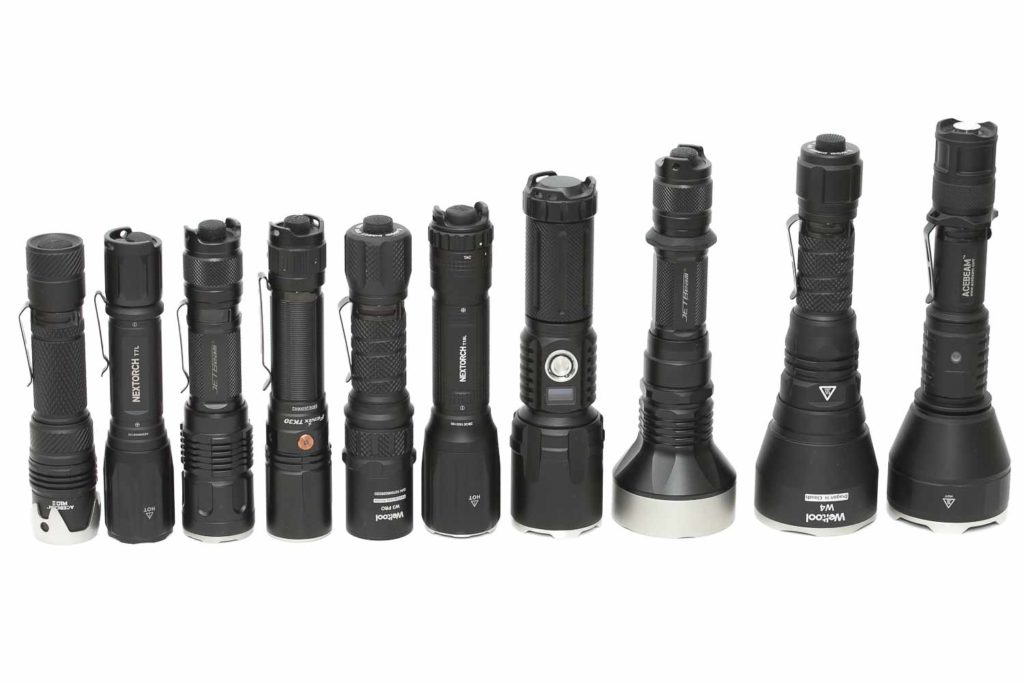
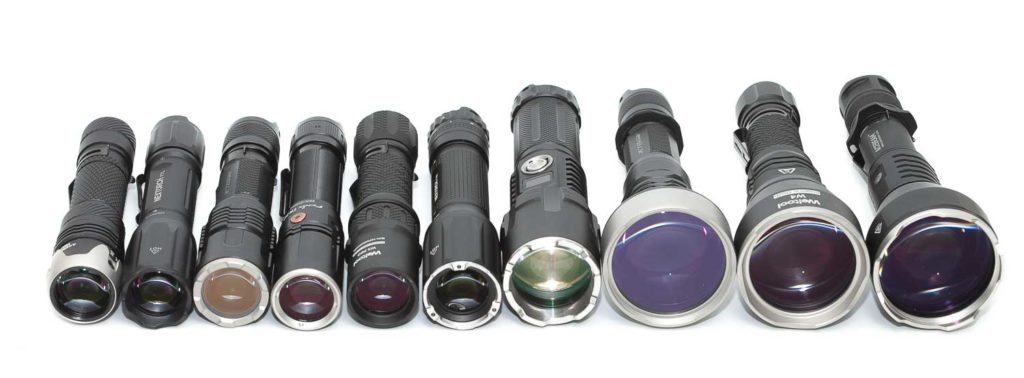

Driver & User Interface:
Before we dive into this topic, I’d like to point out that the battery should be inserted backward. The positive terminal should be pointing to the switch, and not toward the head.
Having said that, let’s dive into the details.
Just below the tail switch is a rotating ring that is used to change modes, with 5 settings. Tactical, Low, Medium, High and Turbo. Except for the Tactical setting, all of them are continuous on. The light will stay on, when you turn the dial to any output. Tactical mode will only work when you press the switch.
Available modes:
- Low, Medium, High (and tactical high)
- Strobe
From OFF:
- Off is actually the Tactical position. Half-press the switch for momentary On in High mode, and a full-press for Strobe.
From ON:
- Turn the dial to 1 = low, 2= Medium, 3= high, and Strobe (these are continuous on)
- In any of these modes, you can have instant access to Momentary High by half-pressing the switch. And a full-press will activate Momentary Strobe. Very intuitive UI
Mode memory:
- Not necessary with this user interface.
Blinky modes menu:
- Only strobe
Low battery warning:
- There is no warning, it has a sudden cutoff
Lock-out mode:
- There is no real lock-out mode.
PWM:
- If there is any, it’s not noticeable
Batteries & Charging
Warning!
Before you read about all the details, I would like to point out 1 thing. When I tried to turn the T10L I couldn’t get it to work. After a few seconds, I realized the battery should be put into the flashlight reversed. The positive terminal should point towards the tail switch, and not towards the head. Fortunately, it didn’t break my light, so I suppose there is some sort of reverse polarity protection.
Another thing you should keep in mind, is that the T10L does not accept flat top, unprotected 21700 batteries. They are probably too short to make contact on both ends.
The battery included in the package is a 21700 type lithium-ion battery with a capacity of 5000mAh. This is about 1.5 times the average 18650 battery, which is nice. The battery itself has some numbers and specifications. It’s a DC0101, 3.6V, 18Wh and has a USB-C port for charging. The cable included is a USB-A to USB-C charging cable, so you can use any classic USB charger you have. More and more manufacturers are moving away from Micro USB charging ports, which I like. Less trouble.
On the positive terminal of the battery is a tiny indicator LED that turns red while charging and turns green when the battery is fully charged. The speed at which the battery is charged is around 1.3Ah which isn’t really much, so I would suggest getting a lithium-ion charger that can charge batteries with a length of up to 77mm. Not many chargers do that, so please check out our list of 21700 chargers as well. Charging with the included cable will take about 4 hours.
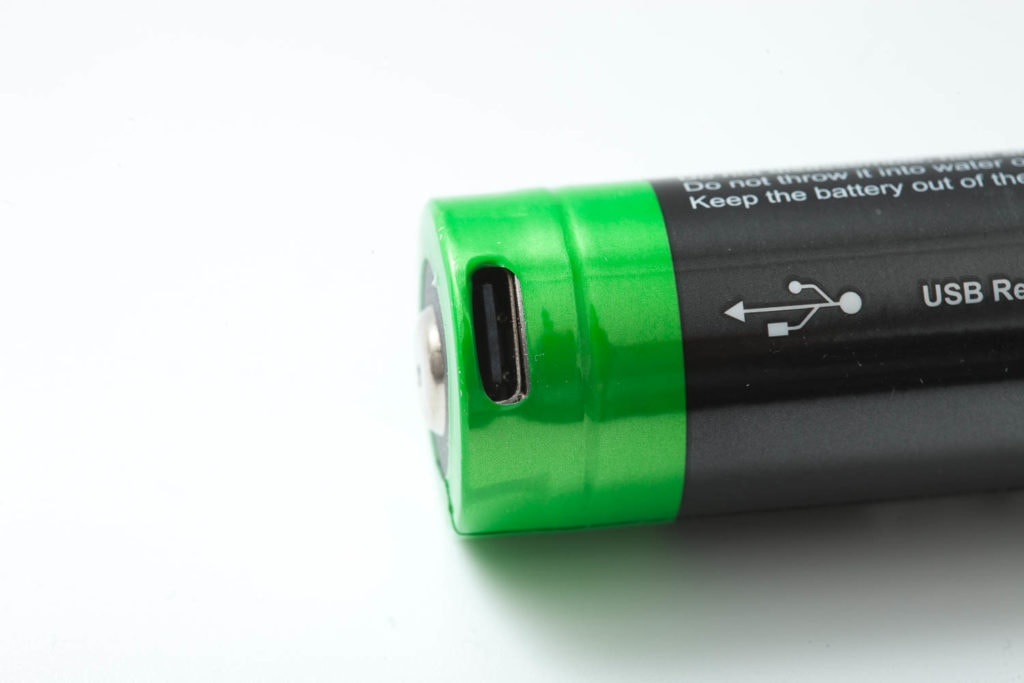
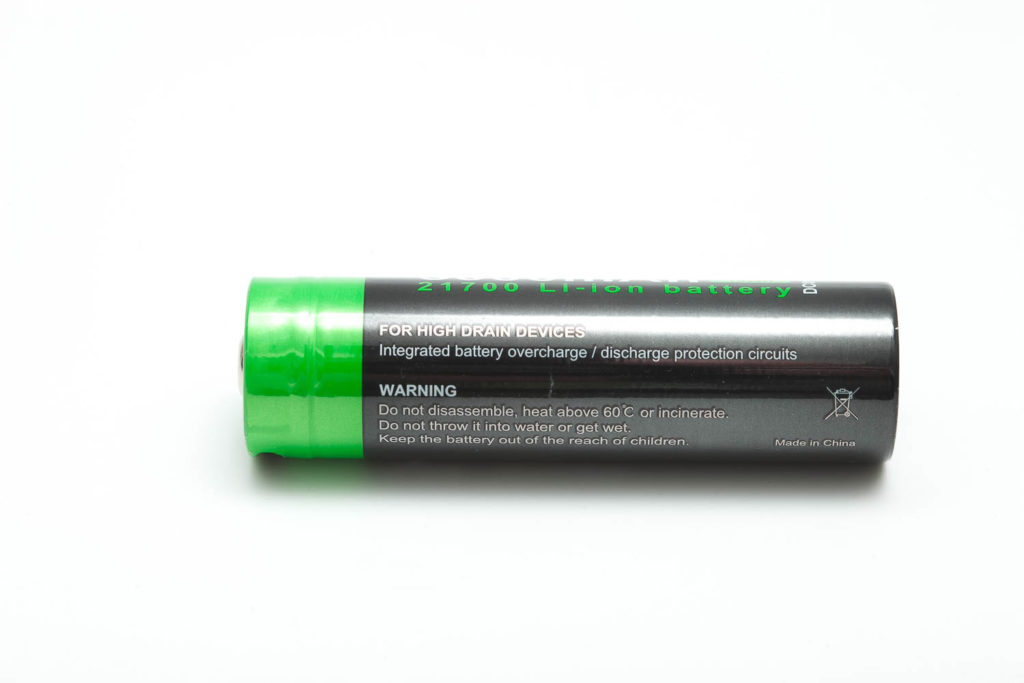
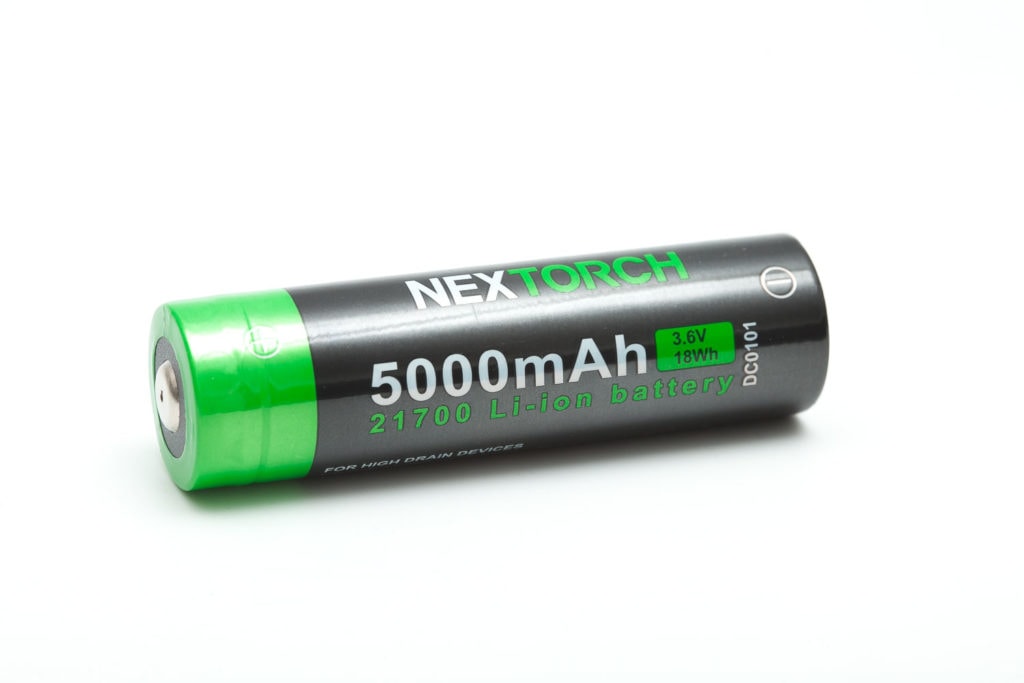
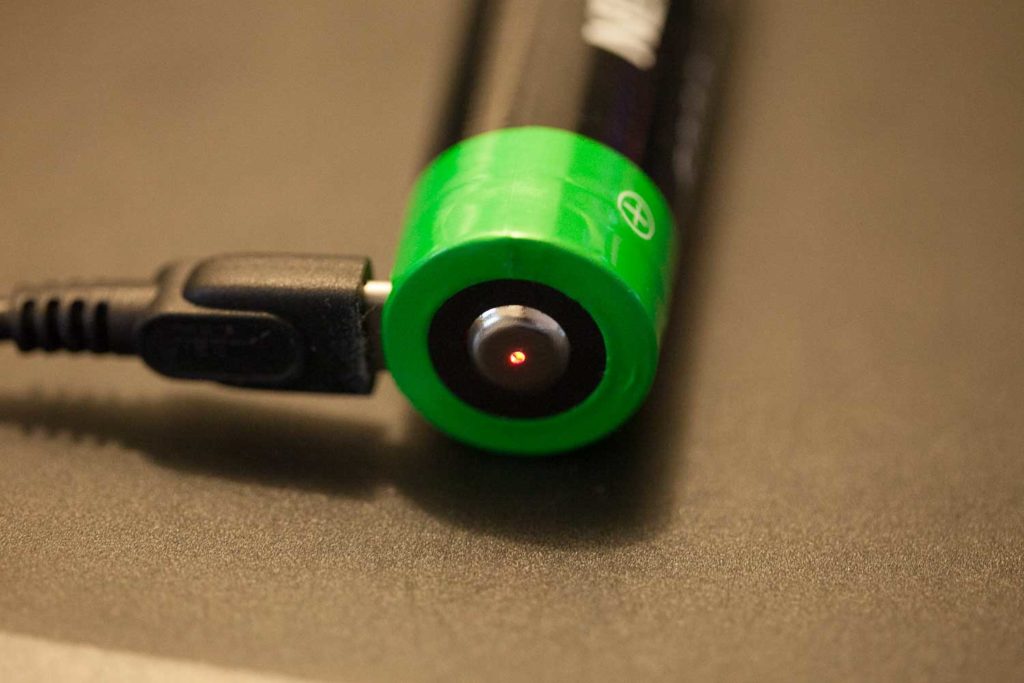
Performance
Lumen measurements:
All output numbers are relative for my home-made Integrating Sphere. It is set up with an Extech SDL400 Lux Meter for measurements including a Kenko PRO1D ND-16 filter. The base measurement is done with a Convoy S2+ that has been tested at 255 lumens.
All of my readings were taken from a fully-charged Nextorch 21700 5000mAh .
| Mode | Specified | 30sec | At startup |
|---|---|---|---|
| Low | 55 | 49.50 | 49.5 lm |
| Medium | 140 | 135 lumens | 136 lm |
| High | 500 | 468 lumens | 477 lm |
According to my measurements, it’s about 20 lumens shy of the 500 lumens the flashlight is specced at. After about 30 seconds it dropped to 468 lumens. Still not too bad.
Runtime:
The runtime test was done with the 50cm integrating sphere, including the Kenko Pro1D ND-16 filter and Extech SDL400 data logging Lux Meter.
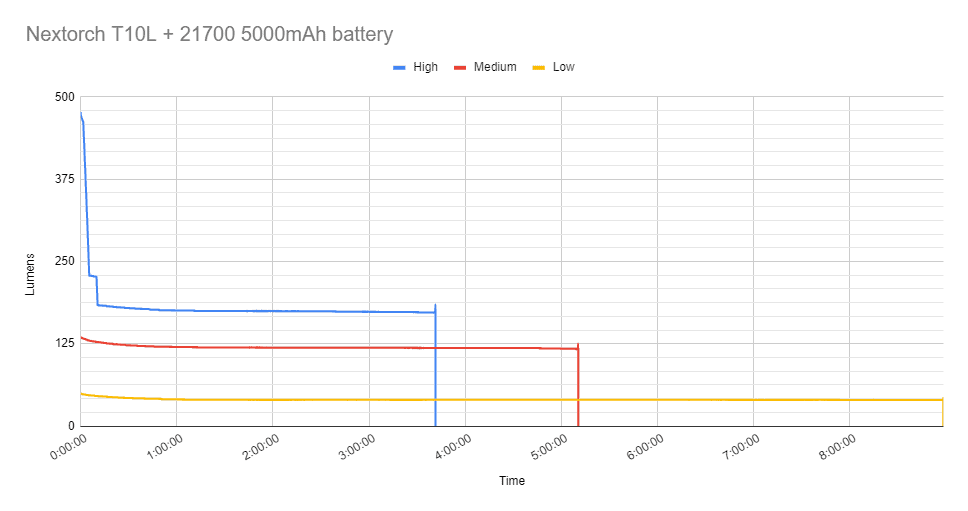
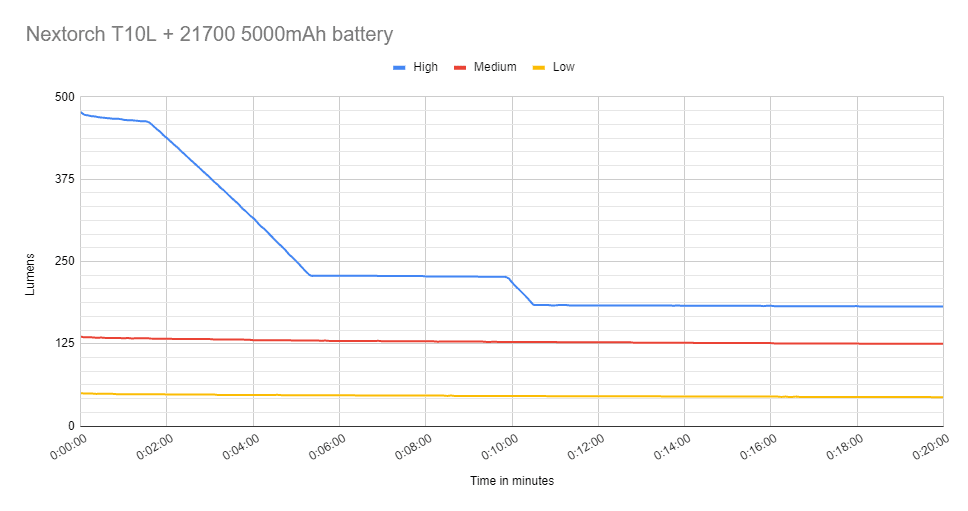
In the 2 graphs above, you can see that the Turbo mode has a nice slow slope in output drop, instead of an instant output drop. Turbo starts at roughly 480 lumens and after 10 minutes and 30 seconds it came down to 180 lumens.
Total runtime for High is 3 hours and 41 minutes. There is no warning and it suddenly turns off. The specifications show a total runtime of 3 hours and 30 minutes.
Total runtime for Medium is 5 hours and 10 minutes. The manual says it has a runtime of 5 hours.
Total runtime for Low is 8 hours and 58 minutes. The manual says it has a runtime of 8 hours and 30 minutes.
Throw Measurement
Measurements were taken outdoors at 20 meters distance with a professional Hagner E4-X Lux Meter. Measured after 30 seconds from startup.
- Low: 58,000 cd = 482 meters / 527 yards of throw
- Medium: 146,000 cd = 764 meters / 836 yards of throw
- High: 484,000 cd = 1391 meters / 1522 yards (0.86 miles) of throw
That is quite a bit more than the claimed 1100 meters. I also compared the T10L with other small LEP flashlights. Take a look at the following picture. You can see that it is doing actually really well, and is second in terms of runtime! It’s very similar to the Acebeam W10 gen2 in terms of throw throughout its runtime. Excellent performance.
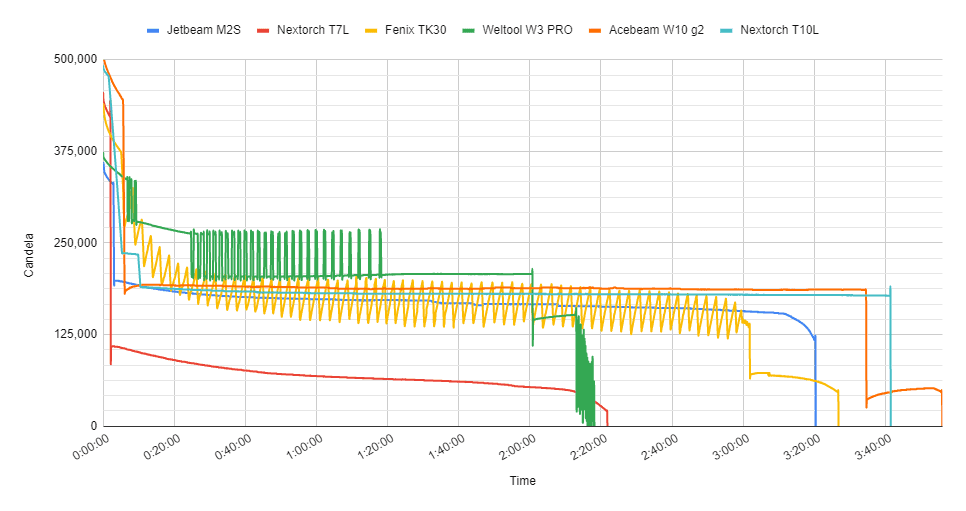
And since some people said it’s just an T7L with an upgraded battery, they are completely wrong. take a look at the following graph, comparing the T7L to the T10L in terms of candela over runtime. Just tell me, how they compare!
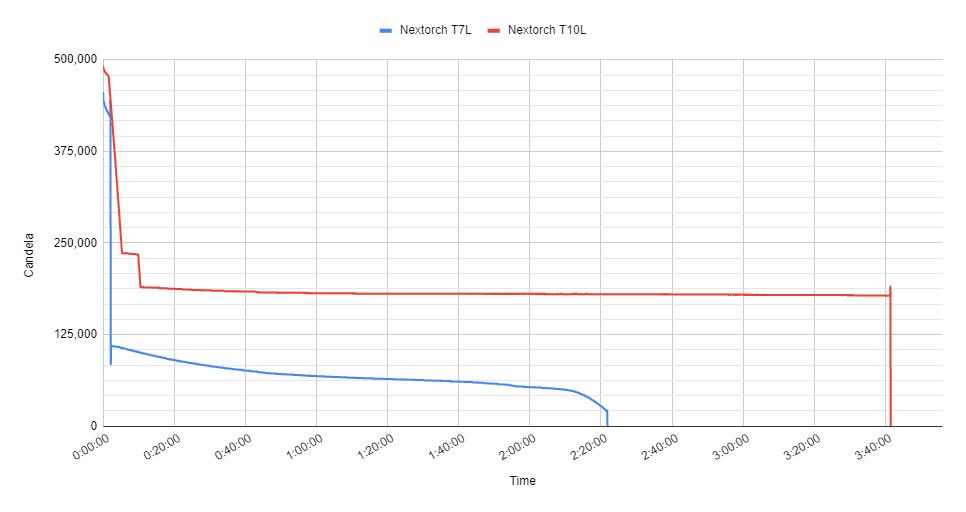
Beamshots
For the following beamshots I used a Canon EOS 5D Mk2 and a 100mm lens. manual settings: ISO1600, .5sec , F4, 5000K
The first tower is 650 meters / 710 yards away, the second tower is about 450 meters / 492 yards away.
Pictures were taken on different days, so the background might be a little dimmer/darker in some images. If there is a huge difference in output, that would still be easily noticeable. All flashlights are pretty close in performance in these pictures, so it’s more a matter of other characteristics when you need to decide which you want to buy. And more important even is the runtime graph that will give you a better indication of how good a flashlight performs throughout the runtime.
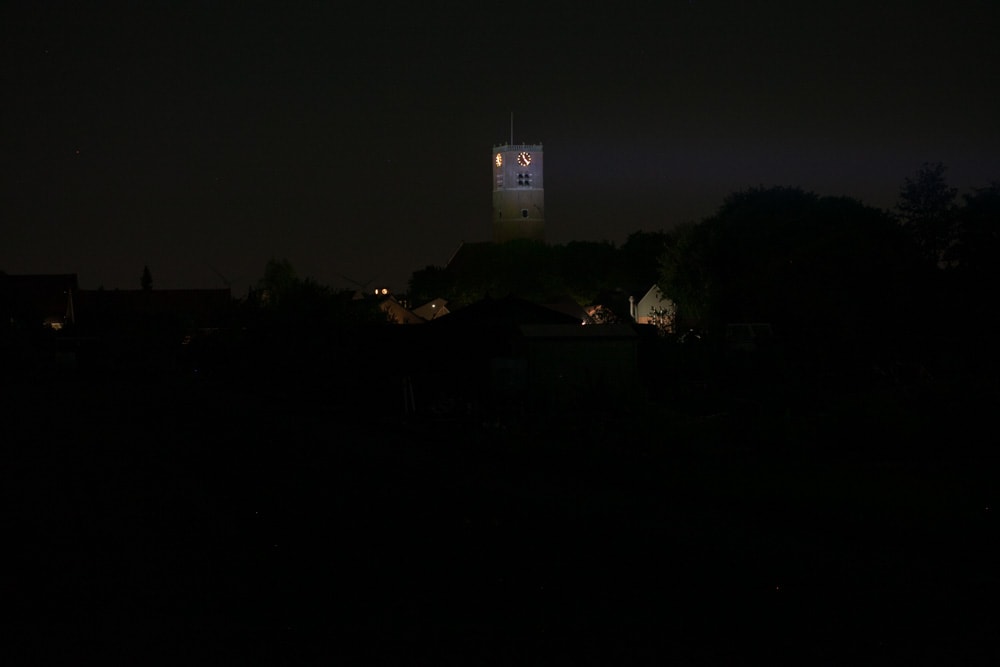
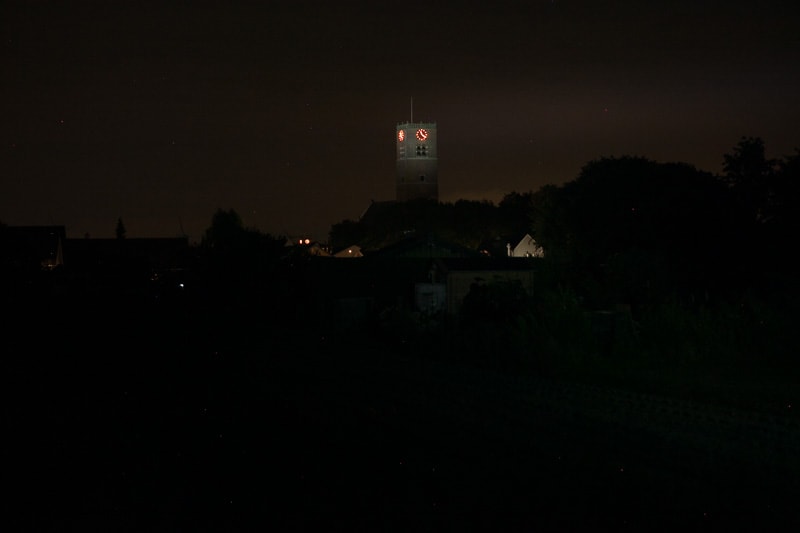
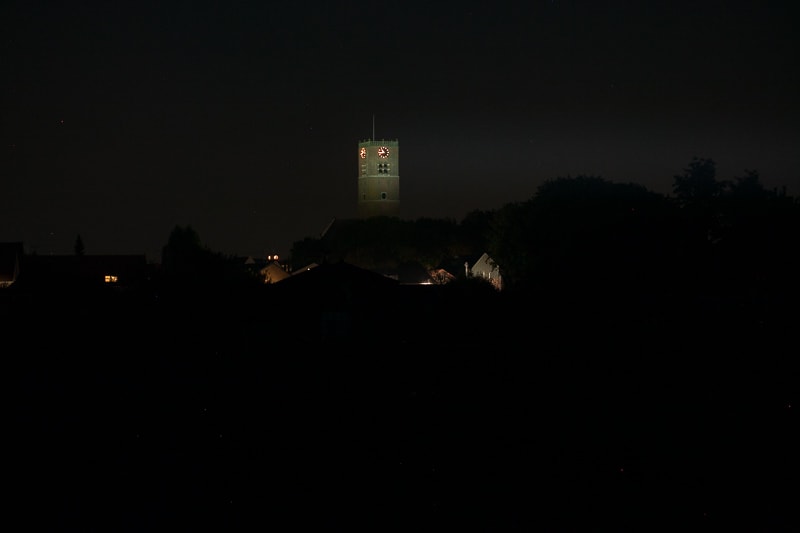
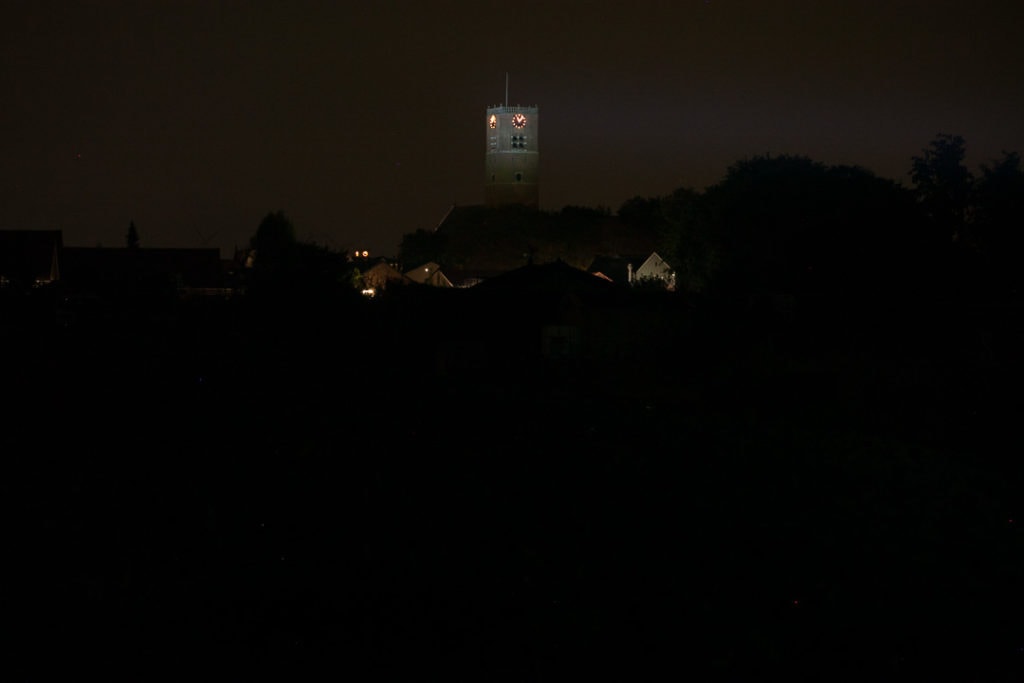
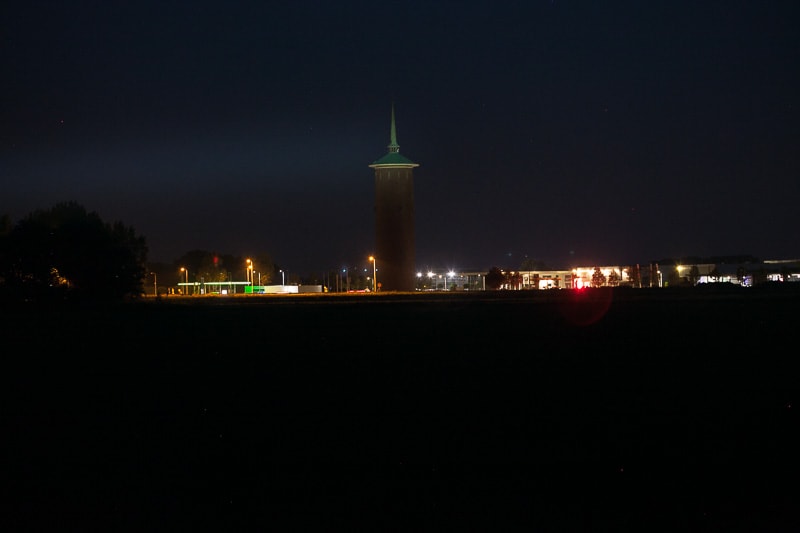
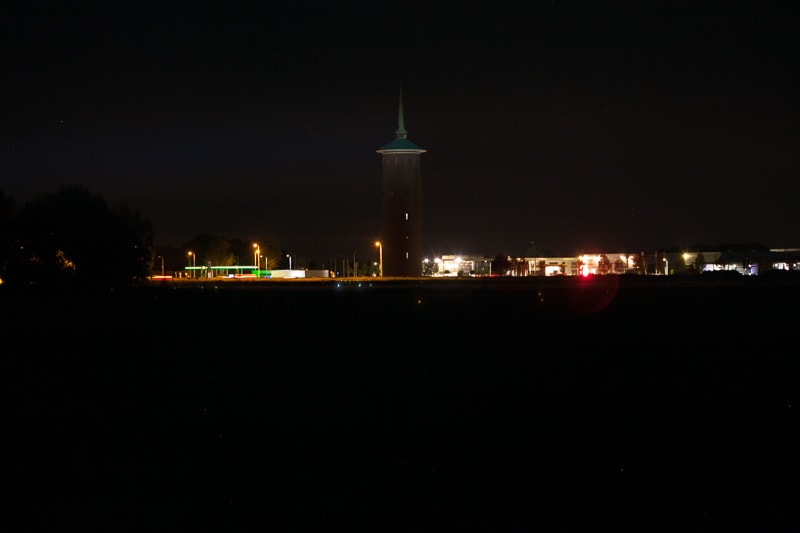
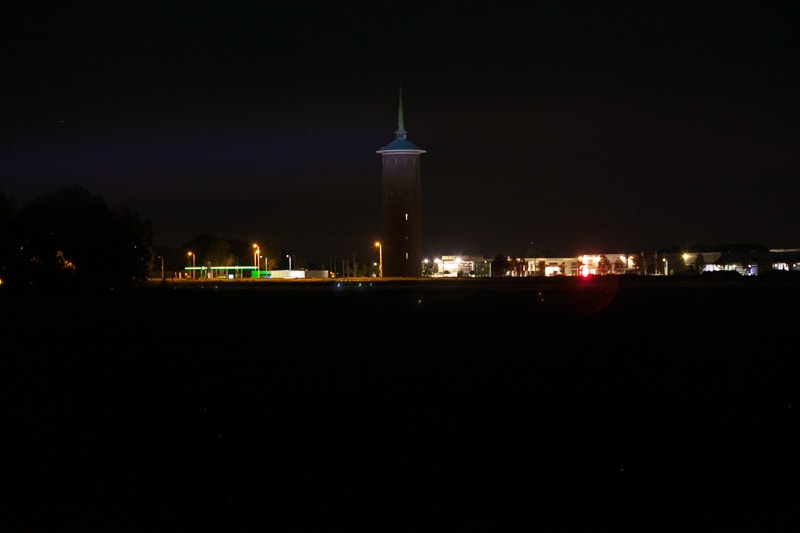
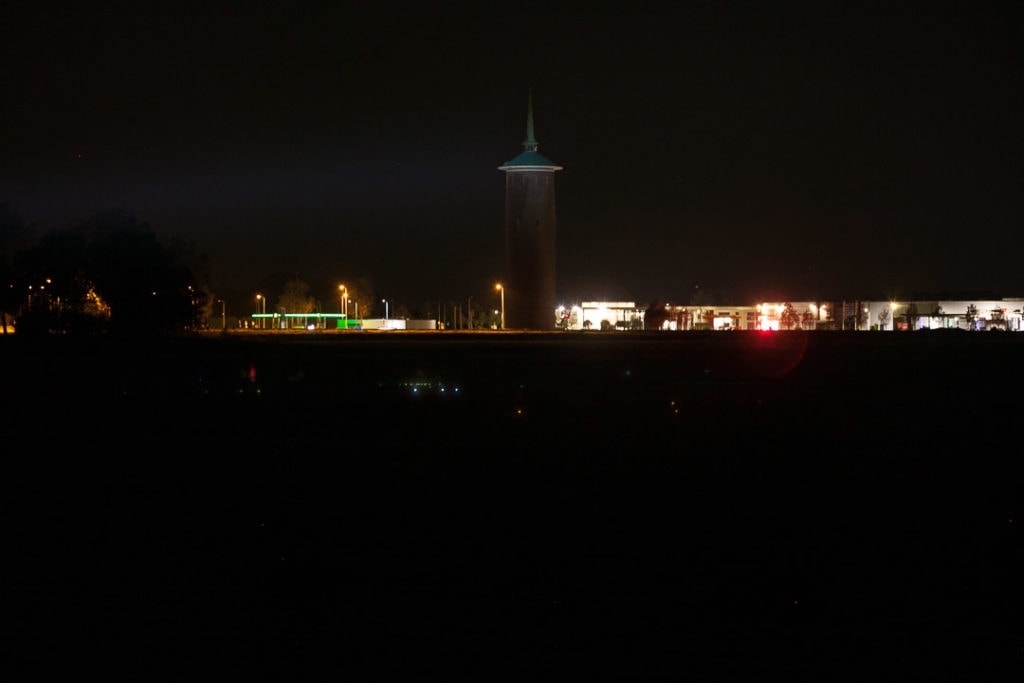
Disclaimer: This flashlight was sent to me for review at no cost, by NEXTORCH . I have not been paid to review, nor have I been holding back on problems or defects.
Final Verdict
Pros
- High quality
- Stainless steel bezel
- 3 modes instead of the usual 1
- 21700 battery for long runtime
- Optional clip and holster
- Great throw and long runtime
- Intuitive UI with access to momentary High and Strobe from any normal mode
Cons
- The battery charges relatively slow
- No pocket clip is included by default?
- The battery needs to be inserted upside down, negative to the front, positive to the tailcap.

5 stars: ★★★★★
NEXTORCH definitely added some interesting features, with a low, medium, and high output. Most other manufacturers only have 1 or maximum 2 modes. The FR-2 tactical ring is also a nice feature. Although I’m usually not a fan of holsters. Charging is a little slow with the normal charge port, so a normal Lithium-Ion charger that can fit 77mm batteries would be great to have. The runtime and candela are excellent and it’s a great step up from the NEXTORCH T7L. Definitely, something you should consider when looking for an LEP flashlight.
NEXTORCH T10L for sale
Get 10% off at NEXTORCH using our exclusive discount code: 1lumen10
1lumen selects and reviews products personally. We may earn affiliate commissions through our links, which help support our testing.